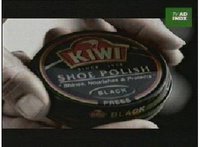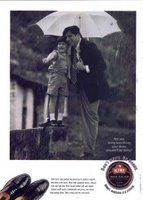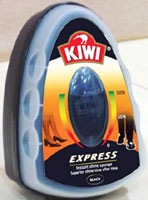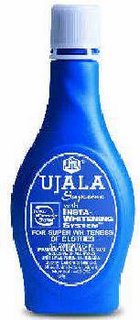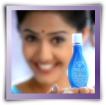In the 1973 classic text, “Management: Tasks, Responsibilities & Practices”, Peter Drucker asks firms to answer five very pertinent questions.
What is our business?
Who is our customer?
What is of value to the customer?
What will our business be?
What should our business be?
Even after 36 years, these simple questions are of profound importance to marketers who are facing one of the toughest times since Great Depression. These questions are more relevant today than ever before. During the period of exuberance, firms tend to forget to answer these key questions and land up in a trouble of their own making. Firms forget value, customers and commonsense when faced with unprecedented growth. This over confidence resulted in inflated prices, aggressive expansions and unrelated diversifications. It is time for marketers to revisit these basics and set their focus on consumer.
Defining the business
One of the fundamental questions that marketers should ask themselves is to clearly define the business. While defining the business, one has to be careful about setting the scope of the business. Too narrow a scope can severely limit the growth of the business. Too broad a definition can cause confusion.
If a marketer narrowly limits the definition of his business by focusing on the product, he will find himself in a state of marketing myopia – a term popularised by Harvard Professor Theodore Levitt. A myopic organization defines its business narrowly which blurs the organizations ability to spot competition from other categories. Further, myopia limits the marketer’s ability to change itself according to changing consumer preferences.
When a marketer becomes too focused on his product, he fails to understand the competition from different types of products satisfying the same consumer need. Although this may sound very simple and obvious, many large organizations and brands have suffered out of this myopia. For example, Scooters which once ruled the Indian market suffered near –death stage due to competition from a different product category of motorcycles. IPod has now occupied the position once owned by Walkman. Ujala redefined the cloth whitener category with a different product form.
The key to a proper business definition is to take the focus away from product and focus on consumer. Marketers must define the business around the customer. The focus should be on the customer rather than the product. Once the organisation redefines itself making the customer as its centre, a world of opportunities will be thrown open.
Too broad a definition blurs the focus of the firm. It is where the firm must be able to understand the consumer it serves. Apple Computers were able to leap forward with its products like Iphone and IPod because it understood the consumers and never restricted itself to be a computer manufacturer.
Understanding the Consumer.
In the highly insightful book “ What the customer wants you to know “ Dr Ramcharan states an important rule – “ The more you know about your customer, the better you and your company will be at identifying and devising products and services that will help address them “
Marketers should be able to collect all the information about the consumers and their buying behaviours. One of the key strength of Hindustan Unilever Ltd is their enormous knowledge about the Indian consumer psyche. This has enabled them to create new products and new business models which are very much in line with consumer’s needs and wants.
Who buys the product and why he buys the product are the two important questions that a marketer should be able to answer.
Consumers buy solutions and not products. Value has been the keyword for success in Indian market. Products that do not have an intrinsic value will not survive in the market. The crisis that most firms now face is a result of the failure of firms to keep their products with in the value expectation of the consumer. When the consumer confidence dips, he turns to those products that offer value. Even in times of recession, consumer needs are not exhausted. He just postpones the decision to indulge till the confidence is back.
The future of business
Predicting the future of business is often the most difficult tasks for a marketer. And marketers have to make decisions regarding the future course of actions.
To predict and determine the future of a business should be based on the firm understanding of the consumer. According to Peter Drucker, this task of making judgements about future should start with a demographic analysis. Demographic analysis is the study of the population and the trends.
Indian market is also witnessing a demographic shift with the younger consumers now becoming the major consuming segment. Those brands which foresee such a demographic shift would be ready with new products and strategies targeting the young consumers.
This calls for massive investment in developing knowledge about customers and their behaviour. Many Indian advertising agencies have realised this need and created specialized departments and Chief Knowledge Officers who are in charge of creation and dissemination of knowledge.
The market environment is in a state of constant changes. Take the case of media. Five years back, very few predicted the explosion of social media in India. Blogging was unheard and Orkut and Facebook was not in vogue, no one was Twittering. Even now Indian marketers are clueless on how to understand the social media and take advantage of the popularity of orkut and facebook.
This is the right time to go back to basics, redefine the business and make the entire business operations centred on the consumer. There will be pain in the process but it will be worth the effort.
 Ujala Crisp and Shine is the re-branded version of Ujala Stiff and Shine. Ujala launched its fabric conditioner Stiff and Shine in 2005. The brand was an addition to the post-wash fabric care product line of Jyothy Lab which was dominated by the liquid whitener Ujala.
Ujala Crisp and Shine is the re-branded version of Ujala Stiff and Shine. Ujala launched its fabric conditioner Stiff and Shine in 2005. The brand was an addition to the post-wash fabric care product line of Jyothy Lab which was dominated by the liquid whitener Ujala.  When launched, Stiff and Shine was primarily viewed by consumers as a product that would offer the convenience of a fabric stiffener ( starch) like Revive. The brand name also reinforced the perception.
When launched, Stiff and Shine was primarily viewed by consumers as a product that would offer the convenience of a fabric stiffener ( starch) like Revive. The brand name also reinforced the perception.








